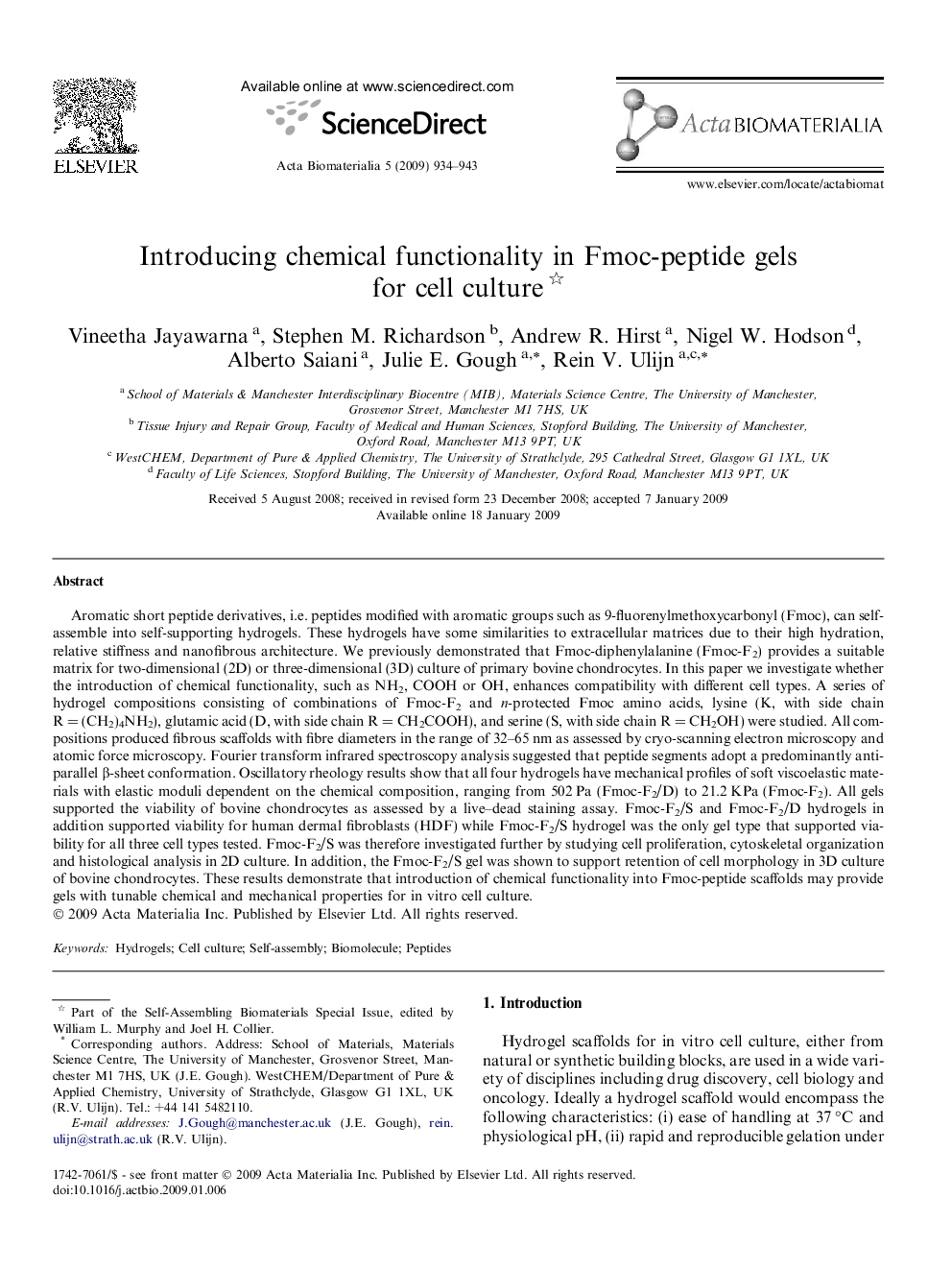| کد مقاله | کد نشریه | سال انتشار | مقاله انگلیسی | نسخه تمام متن |
|---|---|---|---|---|
| 2230 | 104 | 2009 | 10 صفحه PDF | دانلود رایگان |

Aromatic short peptide derivatives, i.e. peptides modified with aromatic groups such as 9-fluorenylmethoxycarbonyl (Fmoc), can self-assemble into self-supporting hydrogels. These hydrogels have some similarities to extracellular matrices due to their high hydration, relative stiffness and nanofibrous architecture. We previously demonstrated that Fmoc-diphenylalanine (Fmoc-F2) provides a suitable matrix for two-dimensional (2D) or three-dimensional (3D) culture of primary bovine chondrocytes. In this paper we investigate whether the introduction of chemical functionality, such as NH2, COOH or OH, enhances compatibility with different cell types. A series of hydrogel compositions consisting of combinations of Fmoc-F2 and n-protected Fmoc amino acids, lysine (K, with side chain R = (CH2)4NH2), glutamic acid (D, with side chain R = CH2COOH), and serine (S, with side chain R = CH2OH) were studied. All compositions produced fibrous scaffolds with fibre diameters in the range of 32–65 nm as assessed by cryo-scanning electron microscopy and atomic force microscopy. Fourier transform infrared spectroscopy analysis suggested that peptide segments adopt a predominantly antiparallel β-sheet conformation. Oscillatory rheology results show that all four hydrogels have mechanical profiles of soft viscoelastic materials with elastic moduli dependent on the chemical composition, ranging from 502 Pa (Fmoc-F2/D) to 21.2 KPa (Fmoc-F2). All gels supported the viability of bovine chondrocytes as assessed by a live–dead staining assay. Fmoc-F2/S and Fmoc-F2/D hydrogels in addition supported viability for human dermal fibroblasts (HDF) while Fmoc-F2/S hydrogel was the only gel type that supported viability for all three cell types tested. Fmoc-F2/S was therefore investigated further by studying cell proliferation, cytoskeletal organization and histological analysis in 2D culture. In addition, the Fmoc-F2/S gel was shown to support retention of cell morphology in 3D culture of bovine chondrocytes. These results demonstrate that introduction of chemical functionality into Fmoc-peptide scaffolds may provide gels with tunable chemical and mechanical properties for in vitro cell culture.
Journal: Acta Biomaterialia - Volume 5, Issue 3, March 2009, Pages 934–943